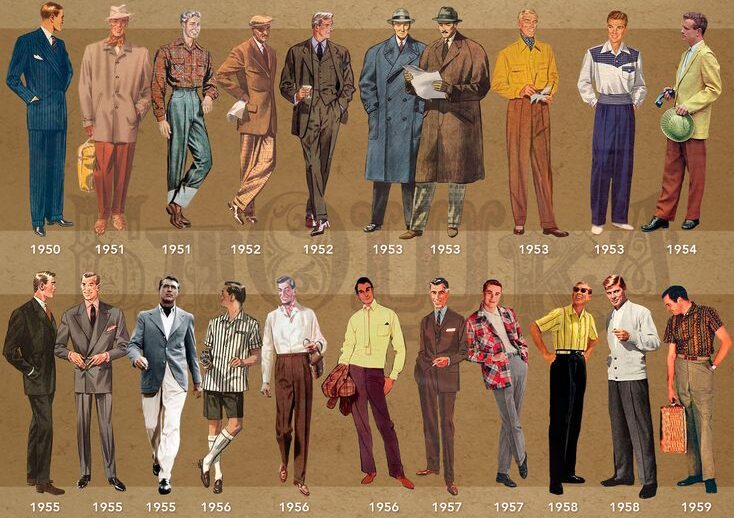
The 1950s. What a decade! It was a time when the world was shaking off the dust of war, embracing new beginnings, and unknowingly setting the stage for revolutions across every conceivable field. From the global political chess match of the Cold War to the quiet hum of scientific breakthroughs in labs, and the electrifying roar of a new kind of music, the Fifties truly were a diamond, shimmering with unparalleled talent and unforgettable moments. This wasn’t just a period of recovery; it was an era of profound transformation, giving birth to iconic figures whose impact still reverberates today.
We’re talking about more than just history; we’re talking about the genesis of modern life, the trailblazers who defied expectations and redefined what was possible. These were the titans of their respective domains, the maestros who composed symphonies of change, the scientists who unlocked the universe’s secrets, and the leaders who dared to challenge the status quo. Their stories aren’t just footnotes in a textbook; they are vibrant narratives of ambition, innovation, and sheer force of will that captivated the world’s attention.
So, buckle up, sports fans of history, because we’re about to dive deep into the heart of the Fifties. Forget the textbooks for a moment and imagine the raw energy, the electrifying atmosphere, and the sheer audacity of these legends as they stepped onto the world stage – their own personal “diamond” – and delivered performances that etched their names into eternity. We’ve got 12 of these phenomenal individuals and their game-changing contributions to celebrate, and believe us, you’re going to want a reminder of these absolute legends!
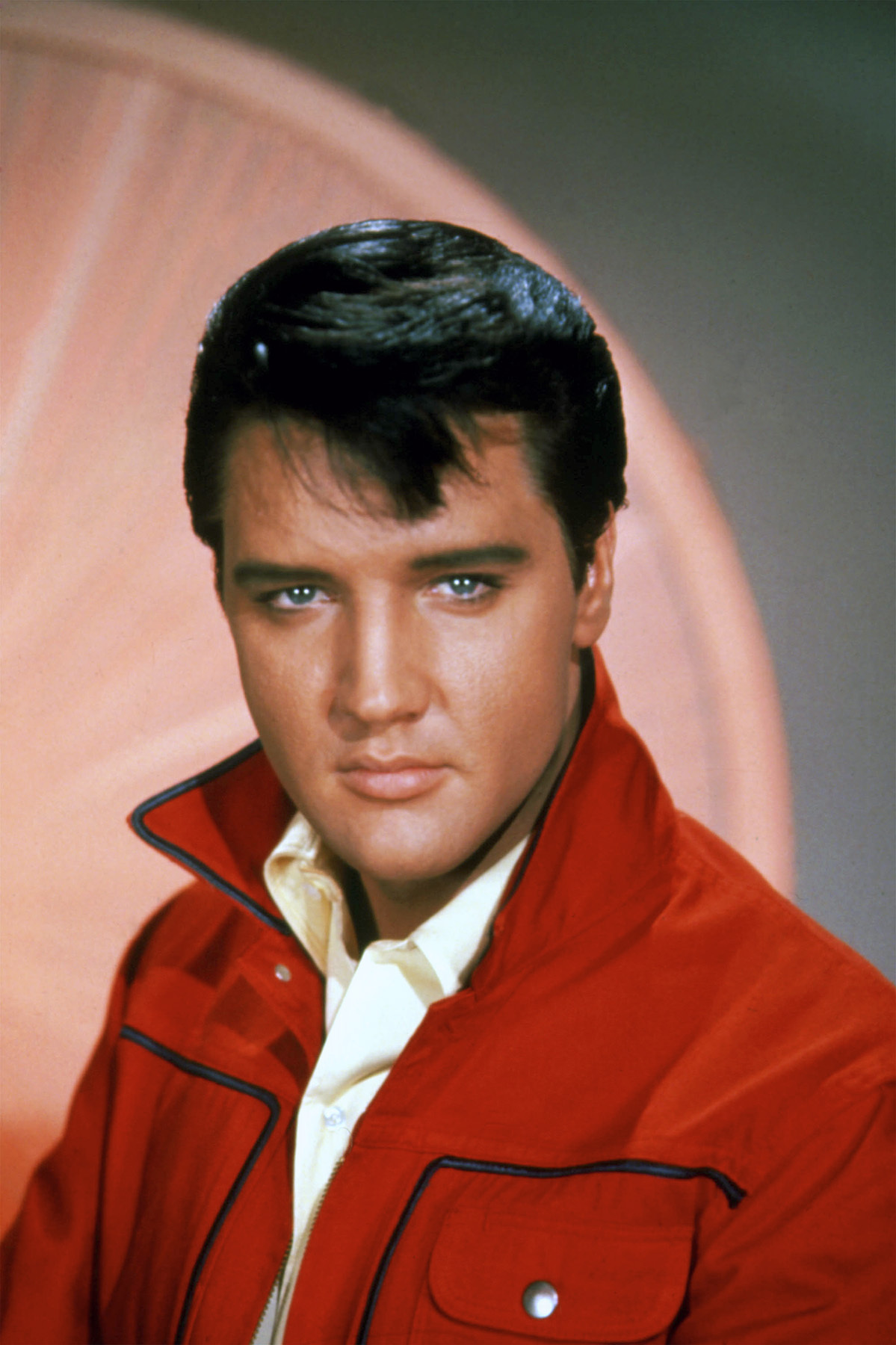
1. **Elvis Presley: The King of Rock and Roll**When you talk about the 1950s, you simply cannot skip over Elvis Presley. The man wasn’t just a singer; he was a phenomenon, a cultural earthquake that shook the foundations of popular music and sent ripples across the entire globe. In the mid-1950s, Elvis burst onto the scene, instantly becoming “the leading figure of the newly popular sound of rock and roll with a series of network television appearances and chart-topping records.” His raw charisma, unique blend of country, blues, and gospel, and his electrifying stage presence captivated a generation and scandalized another, making him an undeniable legend of the decade.
His impact was immediate and monumental. Before Elvis, popular music often catered to a more sedate, adult audience, dominated by crooners and big bands. But Elvis, with his rebellious swagger and hip-shaking moves, spoke directly to teenagers, a market that was just beginning to find its voice and economic power. He didn’t just sing songs; he embodied a new youth culture, a spirit of rebellion and freedom that resonated deeply. He truly was “the best-selling musical artist of the decade,” a testament to his unprecedented appeal and the way he redefined the music industry.
Elvis was more than just a passing fad; he was “considered as the leading figure of the rock and roll and rockabilly movement of the 1950s.” His influence wasn’t just about selling records; it was about shifting cultural paradigms. He paved the way for countless artists who followed, demonstrating the immense power of individual talent to reshape popular culture. The “diamond” of the Fifties stage belonged to Elvis, and he played on it with a passion and intensity that cemented his status as the King, a title he holds to this very day.
Read more about: Beyond the Stardom: 14 Actors Who Faced Heartbreaking Personal Tragedies
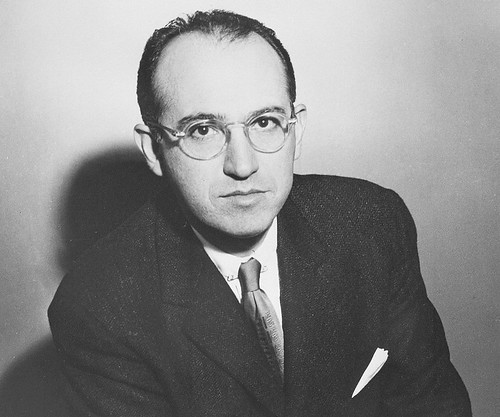
2. **Jonas Salk: The Polio Vaccine Pioneer**In an era marked by geopolitical tensions and cultural shifts, one man emerged as a beacon of hope against a terrifying disease: Jonas Salk. The 1950s saw a critical turning point for polio, a devastating illness that caused widespread fear and paralysis, particularly among children. It was Salk’s monumental achievement—”the successful discovery of the polio vaccine”—that transformed the landscape of public health and offered humanity a fighting chance against this relentless foe. This wasn’t just a medical breakthrough; it was a societal triumph, an act of sheer scientific brilliance that saved countless lives.
The development and widespread adoption of Salk’s poliovirus vaccine in the mid-1950s marked a dramatic shift. “Following the widespread use of poliovirus vaccine in the mid-1950s, the incidence of poliomyelitis declined rapidly in many industrialized countries while it would gradually decline for the next few decades in developing countries reducing the number of death rates from this disease.” This wasn’t just about laboratory success; it was about global impact, a concerted effort to eradicate suffering on an unprecedented scale. Salk’s work exemplified the power of dedicated research to profoundly improve the human condition, making him a true hero of the decade.
Imagine the fear and anxiety that parents faced before this vaccine, the constant threat of a disease that could cripple or kill. Salk’s invention in 1955, and its subsequent mass vaccination campaigns for “more than seven million American students,” didn’t just offer protection; it offered peace of mind. His refusal to patent the vaccine, believing it belonged to the people, solidified his legacy as a humanitarian as much as a scientist. Salk truly performed on the “diamond” of scientific endeavor, delivering a game-winning solution that benefited all.

3. **Fidel Castro: The Cuban Revolutionary**The 1950s weren’t just about music and medicine; they were also a crucible for political upheaval, and few figures embodied this more dramatically than Fidel Castro. His rise to power was a pivotal event that reshaped the geopolitical map of the Western Hemisphere and beyond. “The 1959 overthrow of Fulgencio Batista by Fidel Castro, Che Guevara, and other forces resulted in the creation of the first communist government in the Western hemisphere.” This wasn’t just a change in leadership; it was a seismic shift, installing a revolutionary ideology just miles from the United States’ shores.
Castro’s journey from a young revolutionary challenging the established order to the leader of a communist state was one of the defining narratives of the late 1950s. The “Cuban Revolution (1953–1959)” was a long and arduous struggle, culminating in a triumph that sent shockwaves around the world. It immediately plunged Cuba into the heart of the Cold War’s ideological clash, drawing the attention of both the United States and the Soviet Union. His actions exemplified a powerful defiance against previous colonial and political influences, showcasing the emergence of new world orders.
“In 1959, Fidel Castro overthrew the regime of Fulgencio Batista in Cuba, establishing a communist government in the country.” This act of revolutionary daring, while celebrated by some and condemned by others, was undeniably a display of immense talent and strategic brilliance on the political “diamond.” Castro’s ability to mobilize popular support, wage guerrilla warfare, and ultimately seize power demonstrated a level of political and military acumen that made him one of the most impactful figures of the decade, forever altering the course of his nation and influencing international relations for decades to come.

4. **Gamal Abdel Nasser: The Voice of Pan-Arabism**Across the Atlantic, another revolutionary figure was making his indelible mark on the global stage: Gamal Abdel Nasser. In the Middle East, the 1950s were a period of intense post-colonial aspirations and regional power shifts, and Nasser became its undeniable emblem. His leadership ignited a powerful movement and fundamentally altered the balance of power in the region. “Egyptian general Gamel Abdel Nasser overthrew the Egyptian monarchy, establishing himself as President of Egypt” in the “1952 Egyptian revolution” alongside Mohammed Naguib. This was more than just a coup; it was the birth of a new era for Egypt and a rallying cry for the wider Arab world.
Nasser quickly transcended his role as Egypt’s leader, emerging as “an influential leader in the Middle East in the 1950s, leading Arab states into war with Israel, becoming a major leader of the Non-Aligned Movement and promoting pan-Arab unification.” His audacious nationalization of the Suez Canal in 1956 triggered an international crisis, the “Suez Crisis,” which saw the United Kingdom, France, and Israel invade Egyptian territory. Despite the military operation being a success for the invaders, “after the United States and Soviet Union united in opposition to the invasion, the invaders were forced to withdraw.” This outcome was seen as “a major humiliation, especially for the two Western European countries, and symbolizes the beginning of the end of colonialism and the weakening of European global importance, specifically the collapse of the British Empire.”
Nasser’s courage to stand up to formidable global powers, his championing of self-determination, and his vision for Arab unity captured the imaginations of millions. He truly played a high-stakes game on the international “diamond,” challenging the old colonial order and asserting a new, independent voice for developing nations. His talent for leadership, charisma, and strategic maneuvering made him a central figure in the decolonization movement and a powerful force in shaping the narrative of the 1950s.
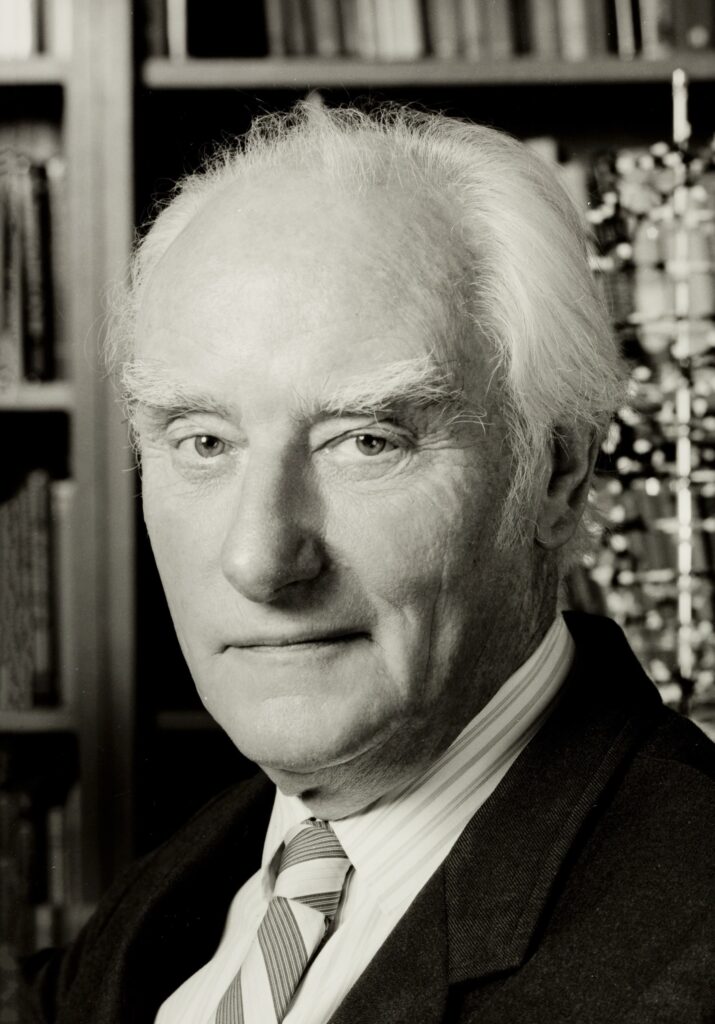
5. **Francis Crick and James Watson: The DNA Code Breakers**In the realm of pure scientific discovery, few achievements from the 1950s rival the revelation of the double-helix structure of DNA. This wasn’t just a scientific paper; it was the unlocking of life’s fundamental blueprint, a discovery that sent shockwaves through biology and medicine. “Francis Crick and James Watson discover the spiral structure of DNA” and “discover the double-helix structure of DNA” in 1952, a monumental breakthrough that unveiled the very language of heredity. This wasn’t just smart; it was genius, a legendary feat of intellectual prowess.
The journey to this discovery was complex, involving critical contributions from other brilliant minds, notably “Rosalind Franklin contributed to the discovery of the double-helix structure.” But it was the collaborative insight of Crick and Watson that pieced together the puzzle, providing a model that explained how genetic information is stored, replicated, and passed down through generations. Their work wasn’t merely theoretical; it provided the foundation for an entire century of biological research, from genetic engineering to personalized medicine.
Imagine the intellectual “diamond” of Cambridge, where these minds tirelessly worked to unravel one of nature’s deepest secrets. Their revelation in 1952, though initially recognized within scientific circles, has grown in stature to become one of the most iconic scientific moments of all time. It wasn’t about developing a product or winning a war; it was about understanding the very essence of life itself. Crick and Watson’s talent for scientific inquiry and synthesis delivered a discovery that continues to shape our understanding of who we are, making them undisputed legends of 1950s science.
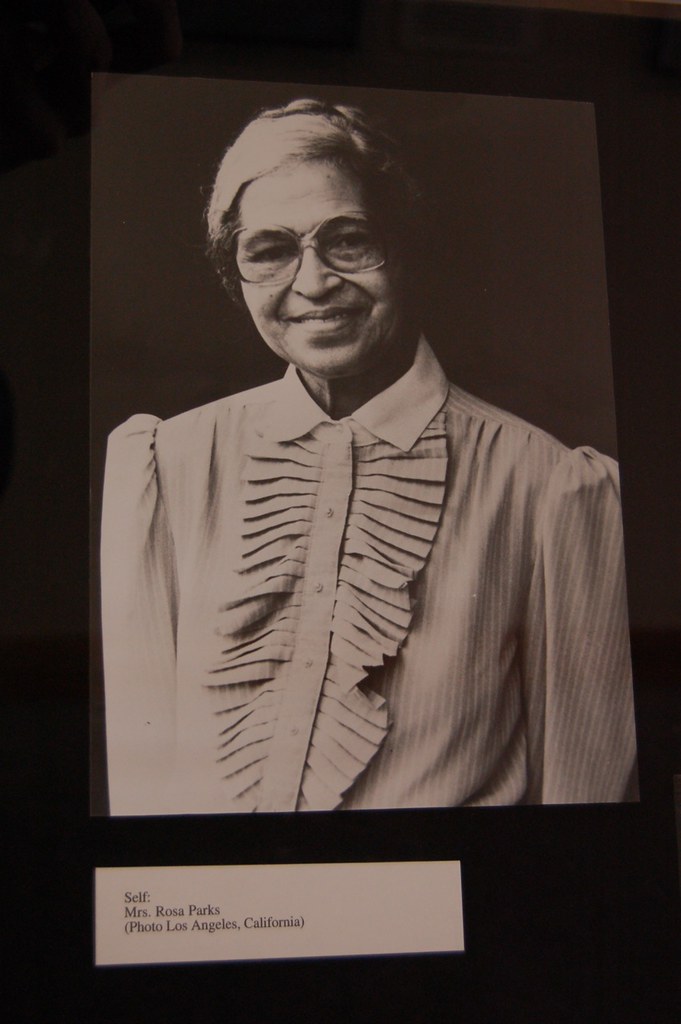
6. **Rosa Parks: The Spark of a Movement**This woman, a true titan of the 1950s, demonstrated that quiet courage could ignite an inferno of change, reshaping the very fabric of society. Rosa Parks wasn’t seeking fame or confrontation when she refused to give up her seat on a Montgomery, Alabama bus to a white passenger in December 1955. She was simply asserting her inherent dignity in the face of an openly unjust and deeply ingrained system of racial segregation. Yet, her single, unwavering “no,” delivered with profound conviction, sent shockwaves throughout the nation, transforming a personal act of defiance into a foundational, electrifying moment for the burgeoning civil rights movement.
Her arrest, an act of institutional injustice, “sparked” what would swiftly become one of the most historically significant boycotts in American history: the Montgomery Bus Boycott. For an incredible 381 days, the African American community in Montgomery collectively and resolutely refused to ride the city’s public buses, demonstrating an awe-inspiring level of solidarity, strategic planning, and unyielding resilience. This wasn’t merely a local protest; it rapidly evolved into a national symbol of resistance against systemic racial discrimination, a powerful testament to the transformative power of organized nonviolent action to challenge and ultimately dismantle entrenched injustice. The eyes of the world turned to Montgomery, witnessing the sheer determination of a people demanding equality.
The boycott’s eventual success was nothing short of monumental, a triumph for justice that reverberated across the globe. It “officially ended when the federal ruling Browder v. Gayle took effect and led to a Supreme Court decision that declared the Alabama laws that segregated buses were unconstitutional.” Rosa Parks’ courageous, almost understated, stand, amplified by the unwavering commitment and sacrifice of an entire community, proved that the “diamond” of civil rights could indeed be polished and revealed through collective, persistent action. Her unwavering spirit paved the way for countless future victories, cementing her legendary status as the undisputed “mother of the civil rights movement” and an icon of human rights.
Read more about: Victoria Principal: Unforgettable Star of ‘Dallas’ and a Life Beyond the Spotlight
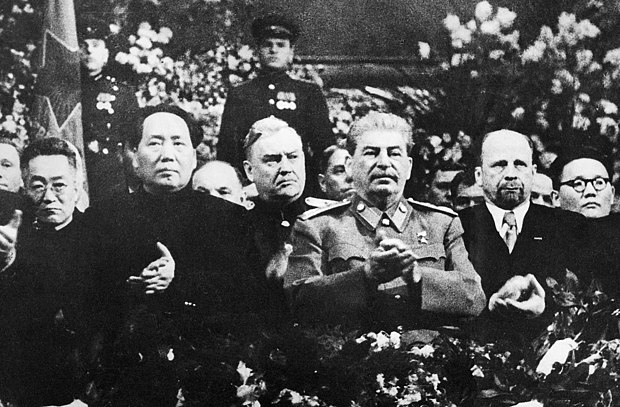
7. **Nikita Khrushchev: De-Stalinization’s Dynamo**Talk about a man who stepped out of the shadow of a colossal giant and dared to fundamentally change the game on the global stage! The 1950s witnessed a dramatic and profoundly impactful shift in the Soviet Union following the death of its long-reigning dictator, Joseph Stalin, in 1953. It was Nikita Khrushchev who, with audacious confidence and strategic cunning, seized this pivotal historical moment, initiating a political campaign and a series of reforms that would shake the very foundations of the communist bloc, both domestically and internationally. He didn’t just inherit power; he actively and dramatically reshaped its direction, forever altering the course of Soviet domestic and foreign policy.
Khrushchev’s most impactful and courageous move was undoubtedly “de-Stalinization,” a political and ideological earthquake that reverberated throughout the Soviet sphere. This audacious campaign involved the public denouncement of Stalin’s infamous cult of personality and his brutal, widespread excesses, attempting to steer the Soviet Union onto a notably less repressive and more pragmatic path. He boldly pursued “a more liberal domestic and foreign policy,” marking a significant philosophical pivot away from the overt hostility of his predecessor, “stressing peaceful competition with the West rather than overt hostility.” This cautious thaw in the Cold War, though still fraught with ideological tensions, represented a remarkable and hopeful departure.
However, Khrushchev’s ambitious reforms and distinctive approach weren’t without their significant complexities and unforeseen consequences, especially within the communist world itself. His pronounced ideological differences with the People’s Republic of China, particularly with Mao Zedong, led directly to “the deterioration between the relationship of the Soviet Union and China in the 1950s,” creating a massive schism within the global communist movement. This internal fragmentation within the communist world had vast and far-reaching geopolitical repercussions that would play out for decades. Yet, his willingness to challenge the entrenched status quo, his confident assertion of a new direction, marked him as a truly impactful and undeniable figure, playing a high-stakes game on the global political “diamond” with immense skill and daring.

8. **Chuck Berry: The Maestro of Rock and Roll’s Melody**If Elvis Presley was undeniably the King of rock and roll, then Chuck Berry, without a doubt, was rock and roll’s chief architect, meticulously crafting the very blueprint for its infectious sound and unmistakable swagger. The 1950s roared to life with the explosive birth of the rock and roll music genre, and Berry was right there, at the epicenter, shaping its every electrifying chord and exhilarating, story-driven lyric. He wasn’t merely a musician; he was a profound visionary, defining a genre that would not only dominate popular culture for decades to come but also inspire countless artists across generations, from the Beatles to the Rolling Stones.
Berry’s unparalleled genius lay in his extraordinary ability to “refine and develop the major elements that made rock and roll distinctive.” His iconic songs, veritable cultural touchstones like “Maybellene” (1955), “Roll Over Beethoven” (1956), “Rock and Roll Music” (1957), and the immortal “Johnny B. Goode” (1958), weren’t just catchy tunes; they were vibrant narratives of a rapidly changing youth culture. He masterfully “focus[ed] on teen life,” giving an authentic and exhilarating voice to a generation that was just beginning to find its independence and assert its identity. Perhaps his most enduring contribution was pioneering the electrifying “guitar solos and showmanship that would be a major influence on subsequent rock music,” forever altering the role of the guitar in popular music.
Imagine the raw, unbridled energy he brought to every performance on stage, his legendary duck walk, his searing, instantly recognizable guitar riffs – a mesmerizing spectacle that captivated audiences and dared them not to dance. Chuck Berry didn’t just play on the “diamond” of popular music; he meticulously carved out a whole new, dazzling section of it, creating a distinctive style and an indomitable attitude that remains iconic and deeply influential to this very day. His monumental impact on the evolution of rock and roll is immeasurable, securing his place as an absolute legend whose rhythmic, melodic, and lyrical genius resonates in virtually every guitar chord played in popular music today.

9. **Charles H. Townes: The Maser’s Architect**While many of the 1950s legends captivated the masses with their electrifying music or their profound political prowess, others quietly revolutionized our technological future from within the hallowed, often unseen, halls of academia and scientific research. Enter Charles H. Townes, a truly brilliant mind who, in 1953, engineered and built the groundbreaking Maser at Columbia University. This wasn’t some flashy new gadget designed for immediate consumer markets; it was a profound, fundamental scientific breakthrough that would, in time, underpin some of the most critical and ubiquitous technologies of our modern, digital world, quietly transforming how we perceive and manipulate light and energy.
The term “Maser,” an acronym for Microwave Amplification by Stimulated Emission of Radiation, represented a remarkably ingenious device that possessed the unprecedented ability to amplify microwaves with incredible precision. Its invention demonstrated a novel and immensely powerful way to generate and intensely focus electromagnetic waves, paving the way for advancements that required levels of accuracy previously unimaginable in scientific research and sophisticated engineering applications. This foundational work quietly redefined what was scientifically possible in the realms of physics and signal processing, far beyond the immediate public’s notice, yet its implications were truly seismic.
Townes’ unparalleled ingenuity during the 1950s effectively created a brand-new “diamond” of scientific potential, a shimmering facet of innovation that would illuminate future discoveries. The Maser, while profoundly important in its own right for its applications in ultra-precise atomic clocks and revolutionary radio astronomy, was the direct, indispensable precursor to the even more transformative laser – Light Amplification by Stimulated Emission of Radiation. Without Townes’ pioneering efforts and visionary insights in the Fifties, countless indispensable technologies we take for granted today, from the lightning-fast speed of fiber optics to the life-saving precision of medical diagnostics and surgical tools, might never have materialized. His legacy is one of quiet, yet utterly seismic, innovation, a testament to the power of pure scientific inquiry.
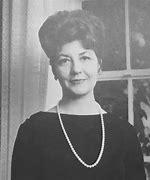
10. **Bette Nesmith Graham: The Correction Fluid Creator**Necessity truly is the proverbial mother of invention, and for the remarkably ingenious Bette Nesmith Graham, that pressing necessity stemmed directly from the frustrating, messy, and time-consuming challenges of office work in the analog era of the 1950s. Before the advent of ubiquitous computers and the effortless magic of digital editing, correcting mistakes made on mechanical typewriters was an exasperatingly difficult, often smudged, and profoundly inefficient ordeal. It was Graham, a secretary with an innate artistic eye and a keen understanding of practical problems, who, in 1956, “invented one of the first forms of correction fluid,” thus gifting the world the revolutionary product we know and often still use today as Liquid Paper.
Her ingenious and elegantly simple solution involved using a small bottle of white tempera paint to meticulously cover typing errors, then allowing it to dry before typing over it with the correct characters. This deceptively simple, yet brilliantly effective, idea was not born in a lab, but rather from her own personal need for greater efficiency and pristine precision in her daily work. What started in her kitchen as a pragmatic personal hack quickly evolved into an indispensable product that would fundamentally transform office environments globally, liberating countless workers from the sheer frustration of smudged erasures, unsightly cross-outs, and the monotonous necessity of retyping entire pages.
Bette Nesmith Graham was far more than just a brilliant inventor; she was an entrepreneurial powerhouse who, through sheer determination and vision, built a multi-million-dollar company from a single, compelling idea. Her extraordinary talent for practical problem-solving, coupled with her sharp business acumen and relentless drive, shines brilliantly on the “diamond” of 1950s innovation, proving that genius often lies in recognizing simple solutions to widespread problems. She conclusively demonstrated that even seemingly small, everyday improvements could have a massive, enduring impact on how we work and live, making her a true legend for her practical genius, unwavering persistence, and groundbreaking entrepreneurial spirit.
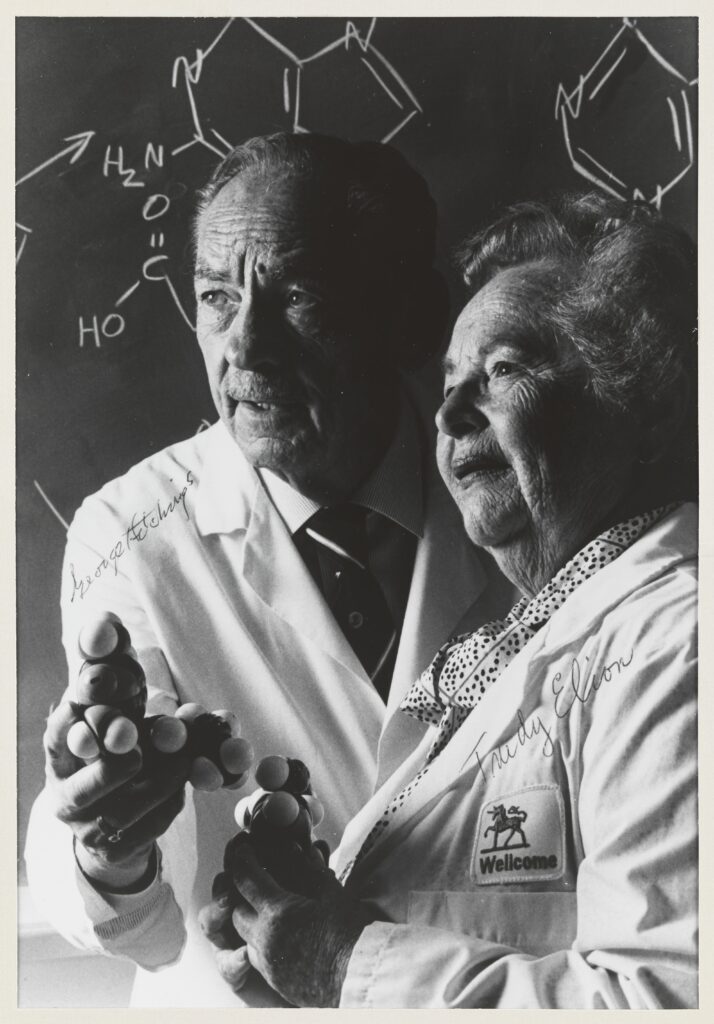
11. **Gertrude B. Elion and George H. Hitchings: The Drug Design Duo**In the quiet, often intense, crucible of the scientific laboratory, breakthroughs frequently occur that profoundly reshape the landscape of human health, altering the course of countless lives. The 1950s were no exception, playing host to the groundbreaking work of Gertrude B. Elion and George H. Hitchings, a truly brilliant scientific duo who revolutionized pharmacology with their innovative and rational approach to drug design. In 1957, their collaborative genius culminated when they “first synthesized” the groundbreaking “immunosuppressive drug Azathioprine,” an achievement that forever changed the landscape of medical treatment for a host of debilitating and life-threatening conditions.
The transformative impact of Azathioprine on modern medicine cannot be overstated; it was nothing short of revolutionary. This remarkably powerful medication is “used in rheumatoid arthritis, granulomatosis with polyangiitis, Crohn’s disease, ulcerative colitis, and in kidney transplants to prevent rejection.” Before their pioneering work, many of these chronic conditions offered little to no hope for effective long-term management or the possibility of successful, life-saving organ transplantation. Their meticulously designed drug offered not just a glimmer of hope, but often, a dramatic new lease on life for patients suffering from severe autoimmune diseases and those undergoing critical, life-changing organ transplants, dramatically improving outcomes and quality of life.
Their revolutionary method, which consciously focused on precisely understanding the biochemical differences between healthy cells and diseased cells, was truly a paradigm shift in drug development. Elion and Hitchings performed with unparalleled scientific precision and visionary insight on the “diamond” of pharmaceutical research, moving beyond trial-and-error to create highly targeted therapies that effectively minimized undesirable side effects while maximizing therapeutic efficacy. Their profound collaboration in the 1950s established an entirely new and enduring paradigm in medicinal chemistry, solidifying their status as enduring legends whose brilliant work continues to save and dramatically improve lives around the world, decades after their initial discovery.
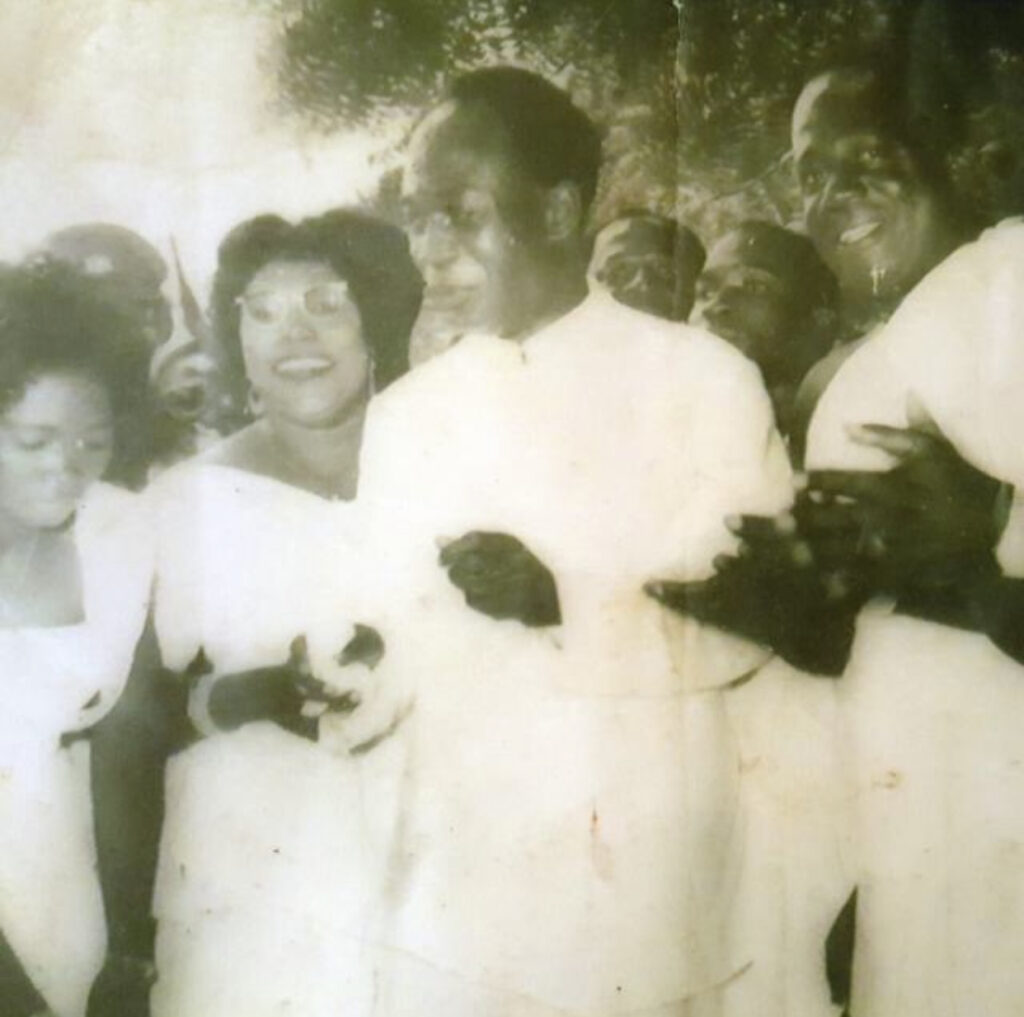
12. **Dr. Kwame Nkrumah: Ghana’s Liberator**The 1950s were not only a vibrant decade of scientific and cultural revolution but also a transformative era when the powerful winds of change swept across former colonial empires, most notably in Africa. Leading the charge for self-determination and national sovereignty was Dr. Kwame Nkrumah, a truly visionary and charismatic leader who, in 1957, “secured the independence of Ghana” from the vast British Empire. This monumental and inspiring achievement wasn’t merely a victory for the people of Ghana; it resonated globally, serving as a powerful clarion call for freedom and autonomy across the entire African continent and beyond, igniting a wave of decolonization.
Ghana, which had previously been known as the Gold Coast under British rule, rapidly became an inspiring beacon of hope for countless other nations and movements striving to break free from the shackles of colonial domination. Nkrumah’s astute and relentless leadership involved “a series of negotiations with the then British empire,” demonstrating not only astute diplomacy and strategic acumen but also an unwavering resolve in the face of immense pressure. His ultimate success in achieving independence marked a truly pivotal moment in the global decolonization movement, conclusively proving that national independence was not just a distant aspiration but an achievable, tangible reality for African nations, paving the way for others to follow.
Indeed, Ghana becoming “the first sub-Saharan African nation to gain independence” in 1957 was a profoundly powerful and symbolic statement, altering the geopolitical landscape forever. Dr. Nkrumah’s extraordinary talent for statesmanship, his compelling charisma, and his passionate advocacy for Pan-Africanism rapidly made him an international icon, a true legend whose transformative performance on the political “diamond” inspired millions across the developing world. He didn’t just lead a country to freedom; he ignited a continent with the flame of independence, forever changing the geopolitical map of the world and leaving an indelible mark on history.
And there you have it, folks – a comprehensive, in-depth dive into the 1950s, a decade that truly was a glittering, multi-faceted “diamond,” shimmering with the unparalleled brilliance and transformative talent of these 12 absolute legends! From the electrifying stages of rock and roll that captivated a generation to the quiet, groundbreaking labs of scientific discovery that unlocked the secrets of life and technology, and from the intense battlegrounds of civil rights that demanded equality to the high-stakes negotiation tables of decolonization that reshaped global power – these extraordinary individuals weren’t just participating in history; they were actively and dramatically changing it. Their audacious spirit, their unwavering determination, their relentless pursuit of progress, and their sheer, undeniable genius didn’t just shape their own era; they meticulously laid the foundational groundwork for the complex, dynamic world we inhabit today. So, next time you reflect on the Fifties, take a moment to remember these titans, these absolute game-changers, whose enduring legacy continues to inspire, challenge, and redefine what it truly means to be an iconic legend. Their performances on the “diamond” of the 1950s were nothing short of spectacular, and their impact remains as vibrant and relevant as ever!

